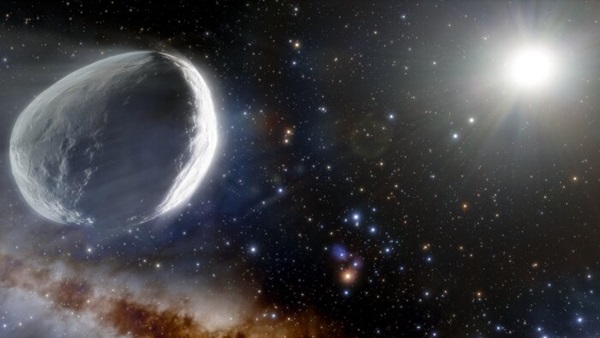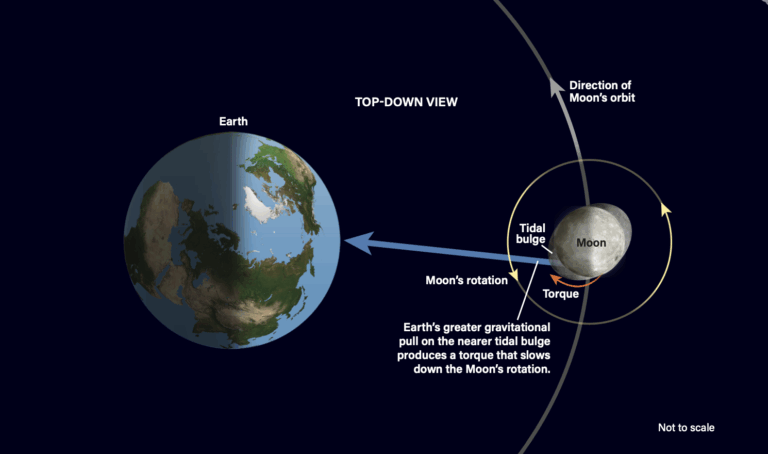Key Takeaways:
Astronomers searching through six years of images from one of the best astro-cameras in the world have just made a massive discovery — literally. Pedro Bernardinelli and Gary Bernstein, both of the University of Pennsylvania, have spotted a giant comet traveling inward from the fringes of our solar system, headed for a close encounter with the Sun in 2031.
Based on the amount of light it reflects, the pair estimates the comet, called C/2014 UN271 (Bernardinelli-Bernstein), is some 60 to 120 miles (100 to 200 kilometers) across. That’s roughly 10 times the average diameter of other known comets. The researchers also estimate Comet Bernardinelli-Bernstein is some 1,000 times more massive than the average comet. That means it’s not only the largest comet discovered in modern times, but also now the largest known member of the solar system’s distant Oort Cloud.
Long journey
The Oort Cloud is a spherical shell of icy, rocky remnants left over from the solar system’s early years. It sits beyond the Kuiper Belt, which is the region wherein Pluto orbits at an average distance of about 40 astronomical units (AU; one AU is the average Earth-Sun distance) from the Sun. The more distant Oort Cloud encompasses a region about 1,000 and 100,000 AU from the Sun. Comets within this cloud orbit the Sun at a variety of angles, rather than in the relatively flat plane of the planets, giving the Oort Cloud its spherical shape.
New comets are discovered all the time, by both amateurs with constantly bigger and better telescopes, as well as by professional surveys that can scan vast swaths of the sky in a single shot. Each new comet adds to our picture of the solar system, particularly because objects in the Oort Cloud are pristine. Typically, such objects have never before approached the Sun, so when gravitational interactions toss them inward, they are discovered as comets.
lUncovering new objects to learn what they can teach us about our past is exactly why Bernardinelli and Bernstein were combing through thousands of images. These images were taken as part of the Dark Energy Survey (DES) by the 570-megapixel Dark Energy Camera (DECam) mounted on the 4-meter Victor M. Blanco Telescope in Chile. As the name implies, the DES is designed to image 5,000 square degrees of the sky and map some 300 million galaxies to better understand the mysterious dark energy that shapes our universe. But while staring into space from 2013 to 2019, DECam also spotted other objects, including numerous foreground solar system worlds interloping across the images.
Within a subset of 80,000 DECam images, Bernardinelli and Bernstein identified more than 800 solar system objects passing through the shots. The comet that now bears their names appeared in 32 of those images, traveling along a trajectory perpendicular to the plane of the planets. In the earliest images from 2014, Comet Bernardinelli-Bernstein was about 29 AU (2.5 billion miles [4 billion km]) out, or nearly the distance of Neptune from the Sun. But astronomers estimate it actually began its journey from deep in the Oort Cloud some 40,000 AU away. That’s about 15 percent the distance between the Sun and its nearest neighbor, Proxima Centauri. It’s also more than 260 times farther than the most distant man-made craft, Voyager 1, currently a mere 153 AU from the Sun.
As of June 2021, Comet Bernardinelli-Bernstein had neared to 20 AU from the Sun (1.8 billion miles [3 billion km]), about the distance of Uranus. And based on recent images, its surface has warmed up enough to develop a coma — a cloud of dust and gas that surrounds a comet as its surface ices begin to sublimate, or turn directly from a solid to a gas. That coma officially clinches Bernardinelli-Bernstein’s classification as a comet.
Looking forward
Despite its whopping size and mass, there’s nothing to worry about — Bernardinelli-Bernstein will steer far clear of Earth. When it does reach perihelion, the closest point in its orbit to the Sun, in 2031, it will still be 11 AU from our star. Remember, that’s 11 times the average Earth-Sun distance, or a little farther out than the orbit of Saturn. Because it will execute its turnaround so far away, even such a massive comet probably won’t grow very bright and will still require a large amateur telescope to spot.
But that doesn’t mean researchers won’t be eagerly following its path. Bernardinelli-Bernstein is hopefully just the first discovery in a wealth of large, icy objects flung to the far outer reaches of the solar system as the giant outer planets jockeyed for position billions of years ago.
“This is a much needed anchor on the unknown population of large objects in the Oort Cloud and their connection with early migration of the ice/gas giants soon after the Solar System was formed,” said Tod Lauer, of the National Optical-Infrared Astronomy Research Laboratory, in a press release.
Now, as more data from the DES are analyzed and next-generation survey facilities such as the Vera C. Rubin Observatory come online, further details about the solar system’s violent past may soon come to light.











